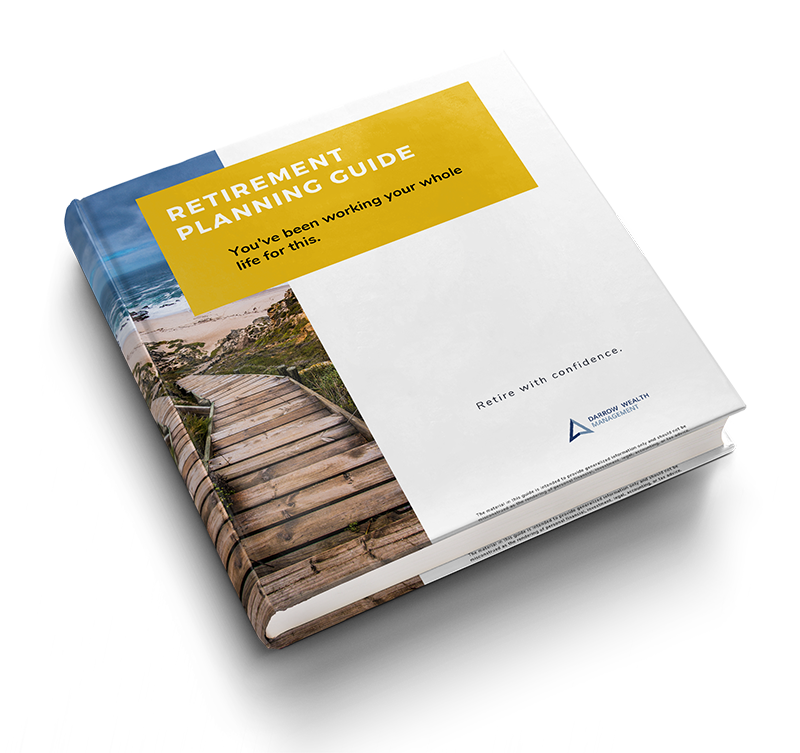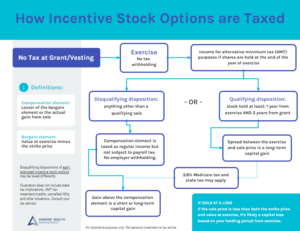What’s the best retirement plan for small businesses? Business owners with employees have several options: traditional 401(k) plan, SIMPLE 401(k), SIMPLE IRA, and SEP IRA are the most popular. The best option will depend on factors unique to your business such as budget, employee makeup and funding goals (for yourself, employee-participants, and contributions from the company).
Retirement plans are a great way to offer employee benefits and the business owner can receive a tax deduction for contributions the business makes on the employees’ behalf. Choosing a retirement plan for your small business is a big decision. Here’s how the most popular retirement plans for companies with a small workforce compare.
Comparing 401(k), SEP IRA, and SIMPLE retirement plans for small business owners with employees
Before moving forward, keep in mind that while you can choose a plan type and design that maximizes your benefit on a relative basis, the plan will still be subject to specific guidelines, including possible mandatory employer funding requirements, which can shift as your workforce changes.
As with most workplace benefits, there are various regulations you’ll need to be aware of including: eligibility, notifications, timing of investments, recordkeeping, and so on. The following is an overview of some of the considerations involved with a traditional 401(k), SIMPLE 401(k), SIMPLE IRA, or SEP IRA. Please note that businesses may have plan design options outside of this discussion; due to the complexity of retirement plan requirements, consult a professional to discuss your specific situation.
Note: funding calculations for self-employed individuals not receiving W-2 income are generally more complex than the examples provided below. Please consult your tax advisor to discuss your situation.
Employee eligibility
- Traditional 401(k) plan. Generally 1 year of service* and age 21+
- SIMPLE IRA. Employees who have earned at least $5,000 during any of the 2 preceding years or expect to earn at least $5,000 in the current year. For employers, must have under 100 employees
- SIMPLE 401(k). Generally 1 year of service* and age 21+. For employers, must have under 100 employees
- SEP IRA. Employees age 21+ who have worked at the company for at least 3 of the last 5 years and received compensation of at least $600 during the year
*The Secure Act has expanded employee eligibility requirements favorably for part-time employees. In 2019, employers could prevent part-time workers from becoming eligible to participate in the 401(k) plan if the individual worked less than 1,000 hours during the year.
Effective for plan years starting in 2021, employers must expand eligibility requirements to include part-time employees who have worked at least 500 hours per year for the last 3 years (consecutively). The three-year lookback period will only apply to hours worked after January 1st 2021, meaning long-term part-time workers who meet this eligibility criteria could contribute starting in 2024.
Deferral limits (individual/employee-participant)
All limits below assume participants only participate in the one retirement plan indicated below.
- Traditional 401(k) plan. Maximum elective deferral in 2022 is the lesser of $20,500 ($27,000 if over age 50 due to the $6,500 catch up contribution)
- SIMPLE IRA. Maximum elective deferral in 2022 is $14,000. The catch-up contribution for those over age 50 is $3,000 (Note: employer contributions are required – see below)
- SIMPLE 401(k). Same as the SIMPLE IRA
- SEP IRA. $0. Only the employer can fund a SEP IRA
See 2022 contribution limits.
SIMPLE plans have mandatory employer funding requirements
- SIMPLE IRA. Employers must make either mandatory contributions of 2% of compensation up to salary of $305,000 in 2022 or make dollar-for-dollar matching contributions calculated as the lesser of: 100% of employee salary deferral or 3% of salary without an income limitation. With a SIMPLE IRA, businesses have the option to reduce their matching contribution to as low as 1% in up to 2 of the last 5 years (rolling).
- SIMPLE 401(k). Employers must make either mandatory contributions of 2% of compensation up to salary of $305,000 or make dollar-for-dollar matching contributions calculated as the lesser of: 100% of employee salary deferral or 3% of salary. Note that the 2022 $305,000 limit on covered compensation applies to either type of employer contribution in the SIMPLE 401(k), but there is no option to reduce the matching contribution for a period of time. For employers who have newly-eligible part-time employees under the three-year rule, current legislation suggests that employers won’t be required to make matching, or nonelective contributions to the accounts of long-term, part-time part employees.
Discretionary employer contributions to a traditional 401(k) or SEP IRA
- Traditional 401(k) plan. Voluntary funding is typically in the form of matching contributions and/or a profit-sharing component. There are many ways small business owners can choose to structure these contributions. Profit-sharing is a flexible way for business owners to decide whether they wish to make a contribution annually. There are different ways to disburse profit-sharing funds across participants (e.g. new comparability, pro-rata, flat dollar) which should be discussed in detail with your plan administrator. Keep in mind, annual nondiscrimination testing (discussed below) may reduce your options. The maximum employer contribution possible is $61,000 in 2022 (further reduced by individual contributions – but the not the catch-up contribution).
- SEP IRA. Annual contributions are optional, but if made, it must be done equally across all eligible participant accounts, generally an equal percentage of compensation. The maximum funding schedule is the lesser of 25% of W-2 earnings (or 20% of net income if self-employed) or $61,000 in 2021. The $305,000 covered compensation limit applies in 2022.
Combined maximum total funding limits (employee + employer)
Annual funding will depend on census data for the business, whether the business is a corporation or a partnership, employee eligibility, and so on. Funding limits below are simplified for comparative reference only and include a number of assumptions regarding plan design, census data, etc. Consult your retirement plan provider about the options for your business.
- Traditional 401(k) plan. $67,500 if age 50 or older due to the $6,500 individual catch-up contribution. If under age 50, the limit is $61,000 in 2022. Employer contributions are limited to the covered compensation limit ($305,000 in 2022).
- SIMPLE IRA. $34,000 if over age 50, which also assumes the company elects 3% matching, and employee makes full $17,000 contribution. This figure also assumes the individual’s W-2 wages are at least $570,000. If W-2 wages are less, the employer’s maximum funding obligations in this example would be reduced to 3% of wages (which is less than 100% of employee contributions). The maximum funding for an employee under age 50 is $28,000 (again assuming a 3% match) and an imputed $470,000 salary.
- SIMPLE 401(k). $26,150 if over age 50 and $23,150 if under age 50 which assumes a 3% salary contribution. The employer’s maximum SIMPLE 401(k) contribution is 3% of the covered compensation limit ($305,000 in 2022).
- SEP IRA. The maximum funding schedule is the lesser of 25% of W-2 earnings (20% of net income if self-employed) or $61,000.
Traditional 401(k) testing requirements for small businesses
A 401(k) plan doesn’t have any automatic minimum employer funding requirements, though employers can choose to elect matching, nonelective, and/or profit-sharing contributions. However, there are layers of compliance testing and administration which could make using a traditional 401(k) plan infeasible.
A 401(k) plan offers higher annual deferral limits (similar to a Solo 401(k)) but annual testing requirements prevent the plan from skewing benefits towards “highly compensated employees”. If the plan fails testing, the employer may be required to disallow or refund excess contributions made by HCEs (even if under the IRS limit) and make extra additions to non-highly compensated workers accounts. Among other things, a low employee participation rate in the plan can cause it to fail testing.
There are 3 tests plans may have to pass annually, if not a Safe Harbor Plan: Actual Contribution Percentage (ACP), Actual Deferral Percentage, and Top-Heavy testing. The testing process is complex and you’ll need to rely on a 401(k) plan administrator to help.
Employers who have newly-eligible employees under the three-year rule will not be required to include those people in annual nondiscrimination and top-heavy tests. Current legislation also suggests that employers won’t be required to make matching, profit-sharing, or Safe Harbor contributions to the accounts of long-term, part-time part employees.
These 3 options can help most employers bypass annual testing requirements:
- Safe Harbor 401(k) plan. With a safe harbor 401(k), the employer must make either mandatory contributions of 3% of pay to each eligible participant’s account (whether they are contributing or not) or matching contributions. There are a couple of ways to structure matching contributions but employees who max out the match can get up to 4%. The maximum compensation that can be considered for safe harbor or matching contributions is the covered compensation limit mentioned earlier. Employees vest immediately in Safe Harbor contributions.
- SIMPLE IRA or SIMPLE 401(k). Like the safe harbor plan, SIMPLE plans also impose minimum funding requirements. Refer to the section above for details.
- SEP IRA. Contributions (if made) must be nondiscriminatory. No testing requirements.
Other considerations when choosing a retirement plan for your company
- SIMPLE 401(k). Plans must file a form 5500 with the IRS annually. SIMPLE 401(k) plans can offer participant loans, but that complicates the recordkeeping requirements. All contributions are 100% vested to the employee.
- Traditional 401(k). Form 5500 filing is required annually. Annual ADP, ACP, and top-heavy testing is a must if the plan isn’t a Safe Harbor plan. Employers can impose a vesting schedule for company contributions.
- SIMPLE IRA. Unlike the 401(k) plans above, terminated participants of a SIMPLE IRA will be subject to unique rollover rules. Participants must have had their SIMPLE IRA account opened for at least 2 years before they can roll the balance over into an IRA or another qualified plan (subject to plan limits) or participant will incur a 25% tax penalty. The exceptions: if the balance is being rolled over into another SIMPLE IRA or if the terminated participant is over age 59 1/2. All contributions are 100% vested to the employee.
- SEP IRA. Since contributions at the individual/participant level are not permitted, funding can be very limited depending on the desired contribution percentage and earnings. Employees vest immediately in contributions.
Credits for small businesses starting new retirement plans
The Secure Act provided credits for small businesses to help offset the costs of starting a new retirement plan. Starting in 2020 and for the next two tax years, small employers may be eligible to receive a credit between $500 – $5,000. The credit helps offset the costs of starting a new 401(k) or SIMPLE retirement plan. An eligible employer doesn’t have more than 100 employees who made at least $5,000 from the employer for the previous year.
The credit is limited to the greater of (1) $500 or (2) the lesser of (a) $250 multiplied by the number of non-highly compensated employees of the eligible employer who are eligible to participate in the plan or (b) $5,000.
Automatic enrollment credit for small businesses
Small businesses that meet the eligibility requirements above may get a $500 credit for three tax years starting in 2020 for new a 401(k) plan or SIMPLE IRA that has automatic enrollment provisions. Converting an existing plan to include auto-enrollment could make you eligible too. This credit is available in addition to the start-up cost credit.
Retirement plans provide tax benefits to business owners
Generally, corporations can deduct their contributions on behalf of employees as a business expense. This reduces taxable income on their K-1. Further, contributions also save on payroll taxes. Individual contributions for the business owner personally will generally reduce the individual’s taxable income on their W-2. Sole proprietors can also get a tax deduction, though the rules are more complex and require the support of a tax advisor.
Which retirement plan is best for your small business?
Choosing a retirement plan can be difficult as the goals of the workforce, employee makeup, and financials change over time. The best plan for a company will depend on a number of factors. Business owners should run the numbers to determine which plan is best for their retirement goals. Making sure funding requirements for employees are affordable is also key.
Of all the options above, perhaps the least popular type of plan is the SIMPLE 401(k). Though eligibility requirements can be made more stringent than the SIMPLE IRA and the covered compensation limit applies to employer contributions, there are some downsides. First, annual Form 5500 filings add complexity and cost to the plan administration. Second, the SIMPLE IRA allows flexibility to reduce the matching percentage to as low as 1% every 3 years.
Speak with your financial advisor and tax professional to understand your options for your business. The rules can be highly nuanced, so it’s important to discuss your goals and alternatives with experts.












